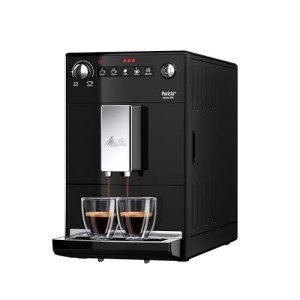Heat Exchange Espresso Machines: A Comprehensive Guide
Espresso machines have actually evolved considerably over the years, dealing with the needs of home baristas and coffee specialists alike. Among these machines, heat exchange espresso machines have gained popularity due to their capability to provide consistent performance and exceptional brew quality. In this article, we will explore the functions, benefits, and important functions of heat exchange espresso machines, supplying an extensive understanding for both prospective buyers and coffee lovers.
Understanding Heat Exchange Technology
Heat exchange espresso machines run on an unique concept that enables simultaneous water heating for developing and steaming. They are equipped with a single boiler that makes use of a heat exchanger system. This feature is considerable as it allows users to brew espresso while steaming milk concurrently, promoting efficiency in the coffee-making procedure.
How Does a Heat Exchange Espresso Machine Work?
The process starts with the machine's water inlet filling the boiler. As the water warms up, it turns to steam. The ingenious heat exchanger uses hot steam to heat extra water in a separate passage designed particularly for the brew group. Compact Espresso Machines implies that water can reach the ideal brewing temperature without awaiting the boiler to change. The crucial steps consist of:
- Water Fill: Water is drawn into the boiler.
- Heating Process: The boiler warms up as water is transformed into steam.
- Heat Exchange: Steam heats up water in the heat exchanger tube.
- Developing: Water from the heat exchanger is pushed through coffee grounds, extracting the tastes needed for an abundant espresso.
This process permits quick temperature level changes and improved coffee extraction.
Advantages of Heat Exchange Espresso Machines
Heat exchange espresso machines offer a number of advantages, especially for those looking to optimize their coffee experience. Here are some key advantages:
- Simultaneous Brewing and Steaming: Users can brew espresso while steaming milk, making it perfect for busy coffee shops and home baristas who value performance.
- Temperature level Stability: The boiler's steam pressure assists preserve a stable temperature level, which is important for constant espresso extraction.
- Flexibility: The style allows for fast changing in between brewing and steaming, making it much easier to create numerous coffee drinks, from lattes to coffees.
- Easy to use: Models often include available controls, making it feasible for both beginners and experienced baristas to produce quality drinks.
- Professional Quality: Heat exchange machines are frequently utilized in commercial settings, supplying users with high-quality brewing performance in your home.
Key Features to Look for in Heat Exchange Espresso Machines
When thinking about the purchase of a heat exchange espresso machine, there are several features that one ought to take into account:
- Build Quality: Look for machines made from resilient products, such as stainless-steel or brass, ensuring durability.
- Boiler Size: A bigger boiler will hold more water and sustain higher output gradually.
- PID Temperature Control: This function helps preserve consistent brew temperature levels, which can improve the coffee-making process.
- Group Head Design: Machines with a saturated or semi-saturated group head offer better temperature stability.
- Alleviate of Use: User-friendly interfaces and intuitive controls enhance the overall experience for baristas at all ability levels.
- Steam Wand Quality: A great steam wand with proper insulation and flexibility enables better texturing of milk.
- Water Reservoir Size: Depending on your requirements, think about how often you desire to refill the water reservoir.
Contrast of Popular Heat Exchange Espresso Machines
To much better comprehend the alternatives readily available in the market, listed below is a comparison table of some popular heat exchange espresso machines:
| Machine Model | Boiler Size | PID Control | Rate Range | User Ratings |
|---|---|---|---|---|
| Profitec Pro 700 | 2.0 L | Yes | ₤ 2,000-₤ 2,500 | 9.5/ 10 |
| Rocket Espresso R58 | 1.8 L | Yes | ₤ 2,400-₤ 2,800 | 9.4/ 10 |
| Elekta Bianca | 1.8 L | Yes | ₤ 2,500-₤ 3,000 | 9.6/ 10 |
| La Spaziale S1 Vivaldi II | 1.5 L | Yes | ₤ 1,800-₤ 2,200 | 9.2/ 10 |
| Bezzera Magica | 1.2 L | No | ₤ 1,600-₤ 1,800 | 9.0/ 10 |
FAQs About Heat Exchange Espresso Machines
What is the primary difference in between a heat exchange and a dual boiler espresso machine?
While both types can brew espresso and steam milk at the same time, dual boiler machines have different boilers for developing and steaming. On the other hand, heat exchange machines make use of a single boiler and a heat exchanger to attain the exact same function.
Are heat exchange machines ideal for novices?
Yes! our homepage of heat exchange machines are created with easy to use functions, making them accessible for novices. With proper assistance and practice, users can rapidly produce quality espresso.
What sort of upkeep do heat exchange espresso machines require?
Regular upkeep consists of descaling, cleaning up the boiler, checking seals and gaskets, and keeping the group head clean. Routine maintenance ensures longevity and consistent performance.
Can I use a heat exchange machine for various kinds of coffee beverages?
Definitely! Heat exchange machines permit users to develop a variety of coffee beverages, consisting of espresso, lattes, coffees, and more.
Heat exchange espresso machines represent a blend of innovation and custom, offering coffee enthusiasts with the tools required for crafting the perfect cup. Espresso Machines With Grinder to concurrently brew and steam, combined with accurate temperature level control, makes them an engaging option for both home baristas and specialists. With the right understanding on functions and upkeep, users can unlock a world of beautiful coffee experiences, ensuring that each sip is as wonderful as the last.

